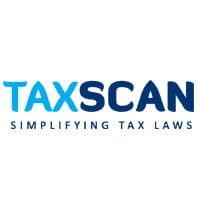Revenue can bring Expenditure Incurred in Earlier Years to be Taxed in Subsequent Years on Bogus Expenditure: ITAT [Read Order]
![Revenue can bring Expenditure Incurred in Earlier Years to be Taxed in Subsequent Years on Bogus Expenditure: ITAT [Read Order] Revenue can bring Expenditure Incurred in Earlier Years to be Taxed in Subsequent Years on Bogus Expenditure: ITAT [Read Order]](https://www.taxscan.in/wp-content/uploads/2023/05/Revenue-can-bring-Expenditure-Incurred-Expenditure-Incurred-in-Earlier-Years-Revenue-Expenditure-Bogus-Expenditure-ITAT-Taxscan.jpg)
The Delhi Bench of Income Tax Appellate Tribunal (ITAT) has held that revenue could bring expenditure incurred in earlier years to be taxed in subsequent years on bogus expenditure.
The assessee, Pradeep Sawhney had shown creditors and the assessee was asked to file confirmation from all 35 creditors as shown in the balance sheet. The assessee filed confirmation from only 7 creditors. No confirmation has filed for the balance amount by the assessee during the course of assessment proceedings. However, notice under Section 133(6) of the Income Tax Act, 1961 was also issued to some of the parties but the same were received back. Hence, the balance amount for which confirmation had not been filed it was added back to the declared income of the assessee
Gautam Jain, on behalf of the assessee, submitted that the sundry creditors were the purchases of earlier years and, if at all, they were treated to be taxable incomes, they should have been taxed in the earlier years. It was argued that having accepted the purchases and the trading results as genuine in the earlier years, the revenue could not choose to tax the amount in the subsequent years.
Kanv Bali on behalf of the revenue relied upon the order of the lower authorities.
The two-member Bench of C. M. Garg, (Judicial Member) Dr B. R. R. Kumar, (Accountant Member) referring to the decision of Karnataka High Court in Southern India Plywood Company Vs. ACIT, dismissed the appeal filed by the assessee holding that the revenue could bring the expenditure incurred in the earlier years to be taxed in the subsequent years if it was proved that the expenditure incurred was bogus and the revenue could deem the liabilities ceased as time went by taking into consideration, the period of non-payment of dues and the intention to pay the dues.
To Read the full text of the Order CLICK HERE
Support our journalism by subscribing to Taxscan premium. Follow us on Telegram for quick updates
Sh. Pradeep Sawhney vs Income Tax Officer , 2023 TAXSCAN (ITAT) 1014 , Sh. Gautam Jain , Sh. Kanv Bali

